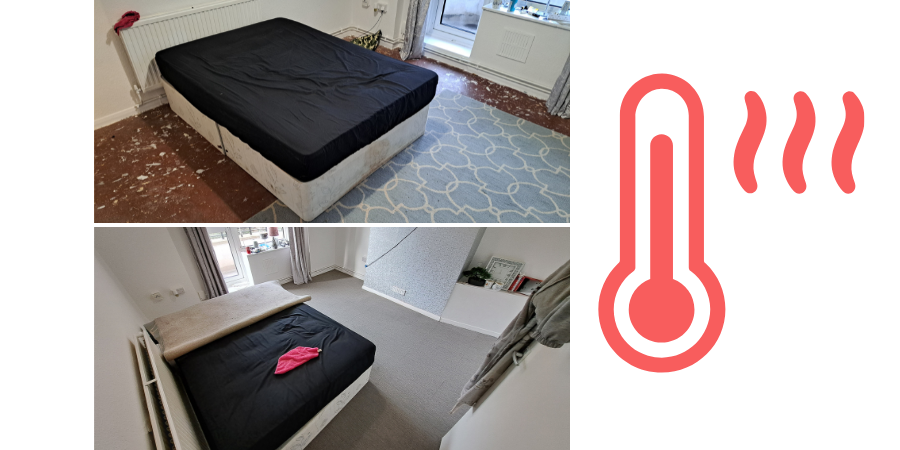Skip to content
Modular carpet can help to reduce energy costs in heating when there is a temperature differential between the indoor air and that under the floor. Uninsulated floors account for 10-20% of heat loss from a room, and the greatest benefit from modular carpet is obtained when a large area, preferably wall-to-wall, is covered. Research found that energy savings range from 8-13%.

Energy cost reduction using modular carpet
Introduction
Comfortable living spaces for residents. The study highlights the heat retention benefits of modular carpet that can help housing associations to reduce energy costs by 8-13% while providing comfortable living spaces.
Insulating Properties
Modular carpet are natural insulators with low heat conduction values that provide excellent thermal insulation. The thickness of the carpet is a major factor determining the insulation efficiency, with thicker carpets providing greater thermal insulation. The surface pile of carpet tiles with millions of tiny fibers traps air and further increases thermal insulation.
Energy Savings
Modular carpet can help to reduce energy costs in heating when there is a temperature differential between the indoor air and that under the floor. Uninsulated floors account for 10-20% of heat loss from a room, and the greatest benefit from modular carpet is obtained when a large area, preferably wall-to-wall, is covered. Research found that energy savings range from 8-13%.
High Insulation Values
Modular carpets hold high insulation values, with the insulation value of carpet being up to 10 times higher than that of hard floor covering. Wool carpets have higher insulation values than comparable carpets of other fiber types, with wool fibers’ natural resilience allowing for better recovery after compression and longer retention of height and insulating properties.
Additional Benefits
Modular carpet contribute to personal safety, removal of indoor air pollutants, and reduction of the frequency and severity of falls. A carpeted room promotes thermal comfort, saves energy, and contributes to a reduction in greenhouse gas emissions that cause climate change.

Conclusion
Modular carpet are an excellent choice for housing associations looking to reduce energy costs while maintaining comfortable living spaces for residents. The heat retention benefits of carpet tiles, along with additional benefits such as personal safety and removal of indoor air pollutants, make them a sustainable and innovative solution for reducing energy costs in housing associations.
References
Ege – Carpet can help reduce energy costs

Manage Cookie Consent
To provide the best experiences, we use technologies like cookies to store and/or access device information. Consenting to these technologies will allow us to process data such as browsing behaviour or unique IDs on this site. Not consenting or withdrawing consent, may adversely affect certain features and functions.
Functional Always active
The technical storage or access is strictly necessary for the legitimate purpose of enabling the use of a specific service explicitly requested by the subscriber or user, or for the sole purpose of carrying out the transmission of a communication over an electronic communications network.
Preferences
The technical storage or access is necessary for the legitimate purpose of storing preferences that are not requested by the subscriber or user.
Statistics
The technical storage or access that is used exclusively for statistical purposes.
The technical storage or access that is used exclusively for anonymous statistical purposes. Without a subpoena, voluntary compliance on the part of your Internet Service Provider, or additional records from a third party, information stored or retrieved for this purpose alone cannot usually be used to identify you.
Marketing
The technical storage or access is required to create user profiles to send advertising, or to track the user on a website or across several websites for similar marketing purposes.